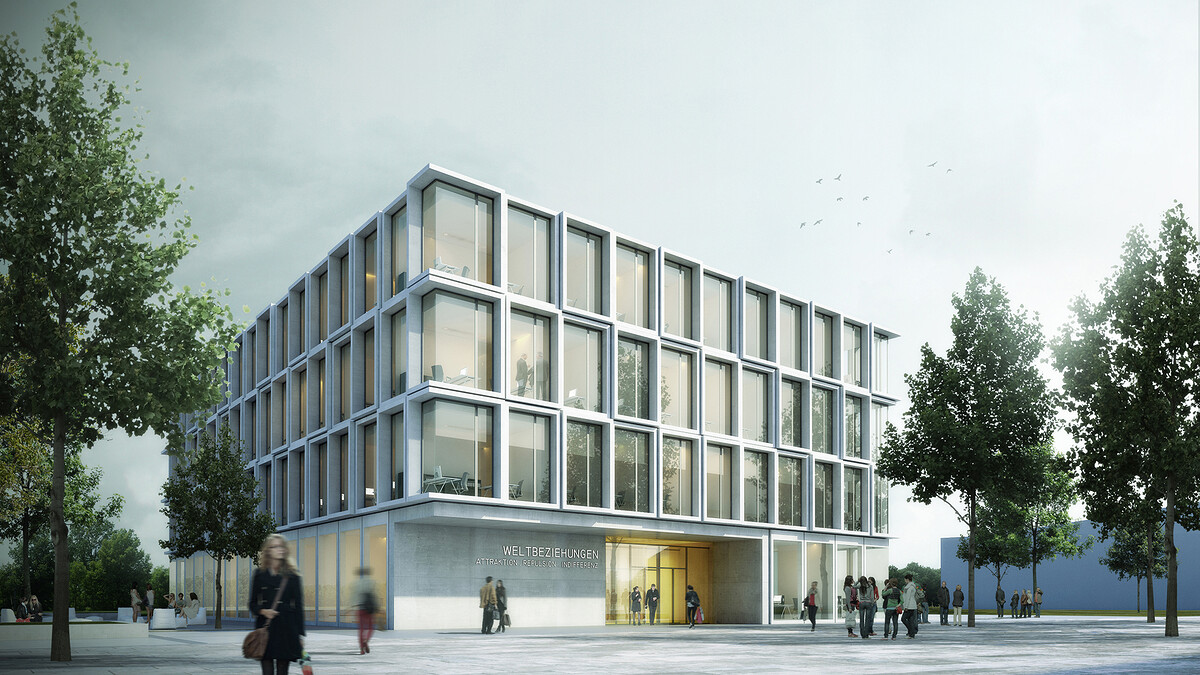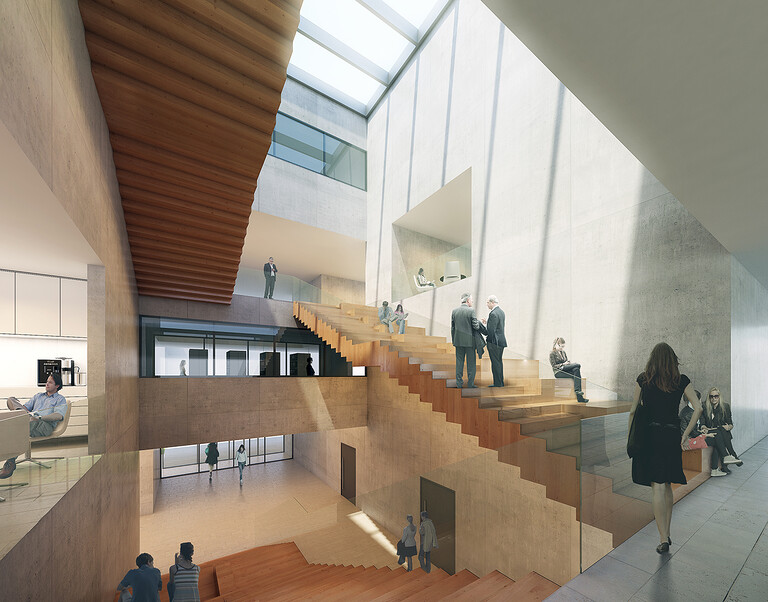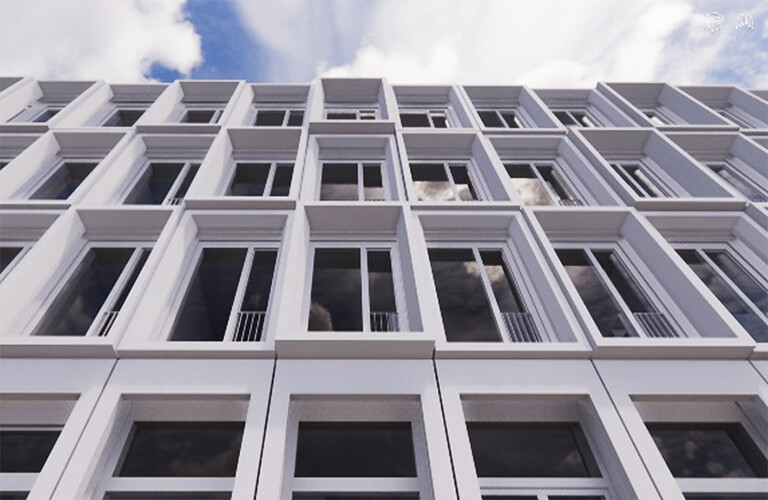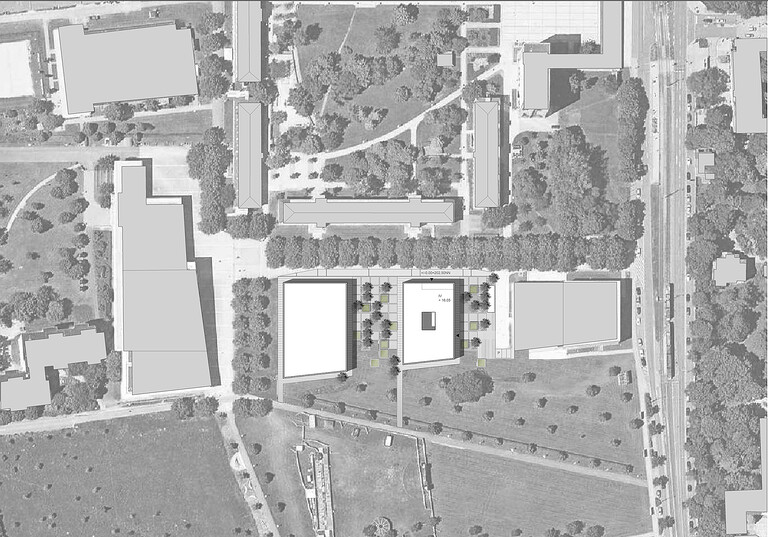New-build ‘Weltbeziehungen’ [World Relations] research centre
Project duration from 2018 to 2022
Client
Free State of Thuringia, represented by the University of Erfurt
Location
Erfurt, DE
Technical specifications
- Gross surface area: 4,847 m²
- Floor space: 2,621 m²
- Technical floorspace: 190 m²
- Traffic areas: 1,203 m²
- Total build cost: approx. €12.1 mill.
A new research building for the Humanities at the University of Erfurt: In an open planning competition, the team of architects from OBERMEYER was able to win against 50 competitors with a draft design inspired by an urban planning concept. The following assignment comprised the structural planning for building LPH 2-9 and landscape planning of the grounds LPH 2-9
The research centre is to be completed before the end of 2021. The OBERMEYER concept comprises a glazed, four-storey building cube. The building is to house workplaces for 160 scientists over its floor area of 2,650 m².
The core notion of this winning draft design was to depict the town as a structured environment that illustrates world relations through its complex structures and its differentiated spaces. This new research centre implements this idea with an intersecting sequence of public, semi-public and private spaces. The central public area based on the design of the cell-shaped glass façade forms an extensive lobby with staircases extending right up through all floors. Around this are grouped semi-public meeting rooms, then the glazed ‘cells’ for scientists, all facing outwards.
This open space concept enhances the campus facility and interconnects the individual buildings to form a composite whole. A campus boulevard defines the East-West axis. The façade topic of cells is also communicated to the open area. In a larger scaled-up version, various free-space modules are arranged, either paved, covered by lawn or by timber terraces.
Copyright:
All pictures: OBERMEYER



